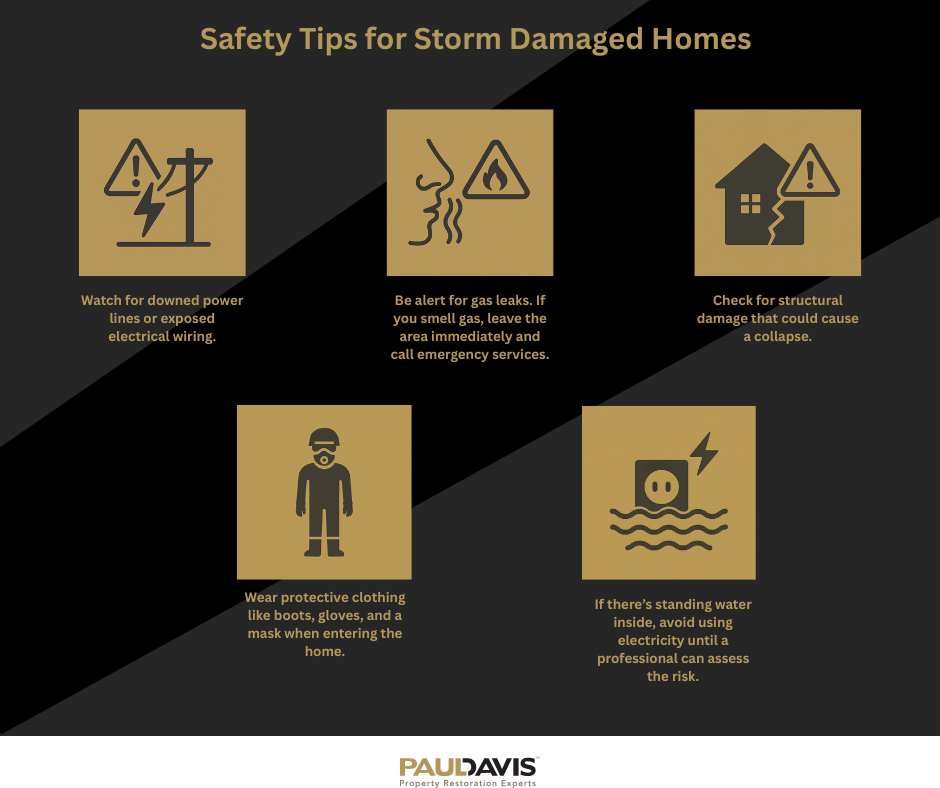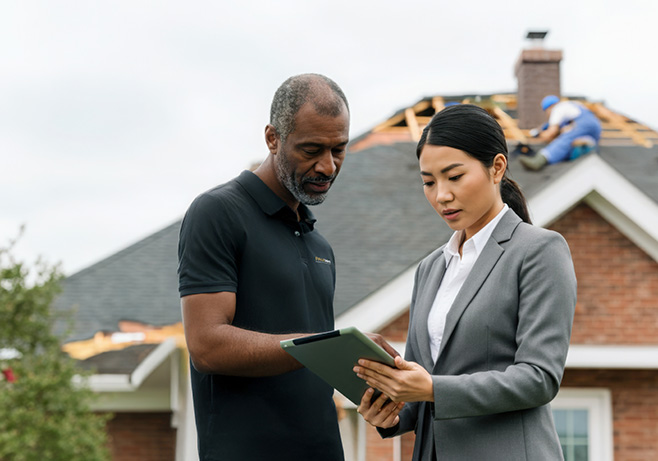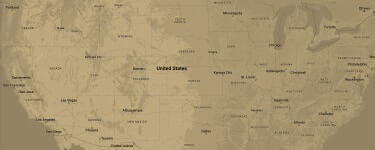Storm damage can turn your world upside down in an instant. According to the National Centers for Environmental Information, weather and climate disasters in the U.S. caused over $92 billion in damages in a single year. Knowing what to do next helps you recover faster and protects your home from even greater loss.
If your home was damaged in a recent storm, schedule a free inspection today!

1. Ensure Your Safety First
Before doing anything else, make safety your top priority. Storms can leave behind more than just visible damage.
-
Watch for downed power lines or exposed electrical wiring.
-
Be alert for gas leaks. If you smell gas, leave the area immediately and call emergency services.
-
Check for structural damage that could cause a collapse.
-
Wear protective clothing like boots, gloves, and a mask when entering the home.
-
If there’s standing water inside, avoid using electricity until a professional can assess the risk.
Don’t take any chances. If your home feels unsafe, wait for first responders or trained professionals to assess the situation.

2. Document All Damage Immediately
Once it’s safe to enter your home, begin documenting the damage as thoroughly as possible. Take clear photos and videos of all affected areas, both inside and out. Be sure to capture a mix of wide-angle shots and close-ups to show the full extent of the damage. Create a detailed, room-by-room inventory of all damaged items, including their estimated value and condition before the storm.
Avoid discarding anything before an insurance adjuster has reviewed the scene. While it’s okay to make temporary fixes for safety, avoid starting a full cleanup until documentation is complete, as this could erase evidence your insurer needs. According to the Insurance Information Institute, proper documentation can significantly speed up your claim and help avoid disputes.
3. Contact Your Insurance Company
The sooner you notify your insurance provider, the better. Most policies require prompt notice for storm damage claims.
-
Call your insurer and explain the situation.
-
Be prepared to describe the damage and provide the documentation you collected.
-
Ask questions: What’s covered? What’s your deductible? Will an adjuster be sent?
-
Keep a record of every conversation and request copies of any paperwork.
-
Understand how to file a storm damage claim and stay proactive throughout the process.
It’s also a good idea to ask whether they cover temporary storm damage repairs or hotel stays if your home is uninhabitable.
4. Prevent Further Damage
While you’re waiting on insurance and contractors, take steps to minimize additional harm to your property.
-
Cover broken windows or roof openings with plastic sheeting, plywood, or tarps.
-
Shut off utilities like gas and electricity if there’s a risk of leaks or electrocution.
-
Move valuables and salvageable furniture away from wet areas.
-
If you buy supplies for temporary repairs, save your receipts. Many policies reimburse these costs.
Even basic efforts like blocking water entry or clearing debris can help preserve your home and reduce repair expenses later.
5. Hire a Licensed Contractor for Repairs
Repairing storm damage is not something you should handle on your own. It’s important to work with a licensed contractor who has the proper credentials, insurance, and experience with storm restoration. Always get multiple written estimates and take time to compare them carefully. Make sure each proposal clearly outlines the scope of work and expected timelines.
Avoid contractors who show up uninvited or pressure you into quick decision. These “storm chasers” often take advantage of homeowners during emergencies. Hiring a reliable and qualified restoration team helps you avoid unnecessary delays, extra costs, and the risk of subpar repairs.
Call Paul Davis Immediately When You Have Storm Damage
Storm recovery is complicated, but you don’t have to go through it alone. Paul Davis Restoration has been helping homeowners recover since 1966 with professional storm damage cleanup, repairs, and emergency storm damage response. From documenting storm damage to working with your insurance adjuster, our team is here to help every step of the way.
We’re IICRC and ACAC certified and respond 24/7 with services backed by decades of expertise.
Contact Us Today for a free estimate!











